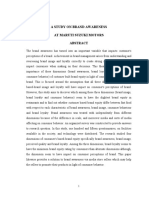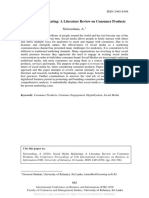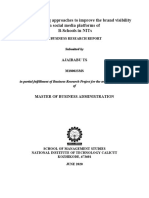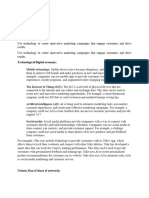0% found this document useful (0 votes)
15 views29 pagesProject
This study investigates the impact of social media on brand awareness among college students, utilizing structured surveys to analyze data on social media usage and brand recognition. Key findings indicate that over 80% of respondents discover new products through social media, with platforms like Instagram and TikTok being the most influential. The research concludes that a strategic social media presence significantly enhances brand visibility and recall, suggesting companies should focus on engaging and visually appealing content to connect with student consumers.
Uploaded by
fam.mr.snap.xCopyright
© © All Rights Reserved
We take content rights seriously. If you suspect this is your content, claim it here.
Available Formats
Download as DOCX, PDF, TXT or read online on Scribd
0% found this document useful (0 votes)
15 views29 pagesProject
This study investigates the impact of social media on brand awareness among college students, utilizing structured surveys to analyze data on social media usage and brand recognition. Key findings indicate that over 80% of respondents discover new products through social media, with platforms like Instagram and TikTok being the most influential. The research concludes that a strategic social media presence significantly enhances brand visibility and recall, suggesting companies should focus on engaging and visually appealing content to connect with student consumers.
Uploaded by
fam.mr.snap.xCopyright
© © All Rights Reserved
We take content rights seriously. If you suspect this is your content, claim it here.
Available Formats
Download as DOCX, PDF, TXT or read online on Scribd
/ 29





















































































